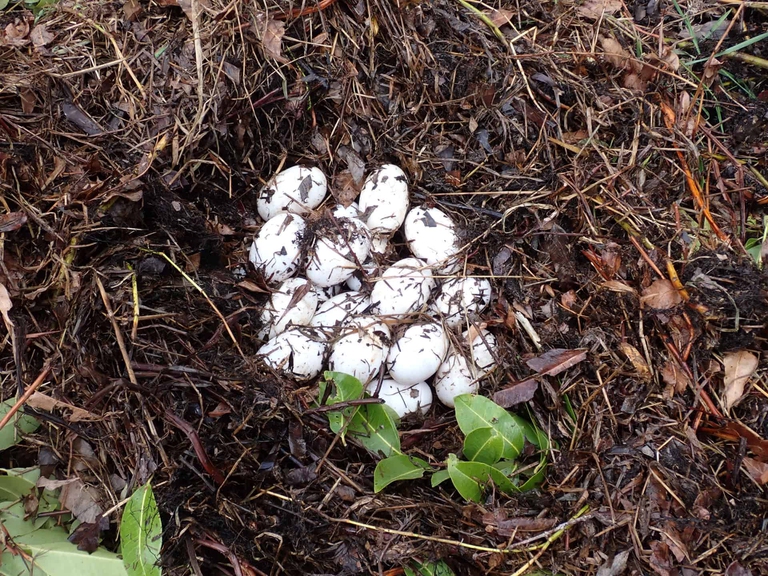https://www.lifegate.it/nuovi-nati-coccodrillo-siamese
- |
- 60 Siamese crocodiles were born in Cambodia
- Considered virtually extinct, they have made their reappearance
- Programs for their protection have been carried out for decades and they are working
The largest population of Siamese crocodile was born in Cambodia (Crocodylus siamensis).A significant event for the conservation of a wild species that was on the brink of extinction.
60 Siamese crocodiles born
Small snouts, long tails, black and brown checkerboard scales.Eggs the size of oranges have hatched, revealing 60 baby Siamese crocodiles chirping like a chorus of birds.These little ones represent the largest population born in this century, the result of two decades of conservation efforts.
The natives saved them from extinction
“There is a biodiversity crisis around the world, but in the tropics of Southeast Asia it is particularly acute,” he said Pablo Sinovas, national director of Fauna and Flora of Cambodia program, the conservation group that helped bring them back.“It's great that we were able to help these people crocodiles to recover and witness this historic breeding event.”
Siamese crocodiles had been declared virtually extinct in the wild in 1992, when the species had disappeared from 99 percent of its range, while some small populations survived in captivity in zoos.However, in 2000, following a Fauna and Flora program expedition, a small population was recorded in the remote Cardamom Mountains of Cambodia. The indigenous population of the Chorng people I had protected crocodiles for generations, as he considered them creatures sacredAnd.

Almost extinct due to man's fault
The Siamese crocodile is a medium-sized freshwater species characterized by a prominent bony crest at the back of the head.The species Crocodylus siamensis it is smaller and less aggressive of the saltwater crocodile (Crocodylus porosus) there is also no recorded evidence of attacks on humans, including people washing clothes and children swimming in rivers where crocodiles live.Once upon a time they were widespread throughout much of the south-eastern Asian continent in various wetland habitats including rivers, lakes, swamps and marshes.The decline of this species began with competition with rice farmers for wetlands, but the commercial hunting for the international trade in crocodile skin which pushed these animals to the brink of extinction.
Siamese crocodiles have fine, soft skin and are also easy to breed in captivity.In fact, most wild-caught individuals have been hybridized with other crocodile species, compromising the genetic purity of reserves and impoverishing the wild population.Illegal capture in the wild still represents a great threat to the survival of the species, together with poaching and habitat loss.
Conservation efforts for the Siamese crocodile
Over the past two decades, Fauna e Flora has worked with government agencies and local populations through a program for the protection of the species providing a modest salary, work clothes, GPS devices and transportation such as kayaks and motorcycles.“Community members, who already protect the sites, are the key to success of this program,” Sinovas said.According to Fauna and Flora, the latest count roughly estimates that 250 adult crocodiles persist in Cambodiato, while according to the IUCN (International Union for Conservation of Nature) there are between 500 and 1,000 individuals in nature.Siamese crocodiles are charismatic predators, so their conservation may have notable ripple effects.
“If we can conserve Siamese crocodiles, which requires conserving the wetlands in which they live,” Sinovas said, “then we are consequently conserving all the biodiversity that depends on those wetlands“.Another part of this program is captive breeding and this spring Fauna e Flora celebrated another milestone:the largest release of captive-bred Siamese crocodiles, with 50 young people freed in mont of the Cardamomthe.It will take about a decade for the young and the new generation of nestlings to reach sexual maturity.Then, scientists and local residents will have a better understanding of the likelihood of survival and growth of the wild population.
Bringing a species back from the brink of extinction is a slow operation and the Siamese crocodile is still considered critically endangered by the IUCN.What researchers hope is that the effort to save this large crocodile population in Cambodia it could be taken as model to save smaller groups found in Laos and Borneo.
